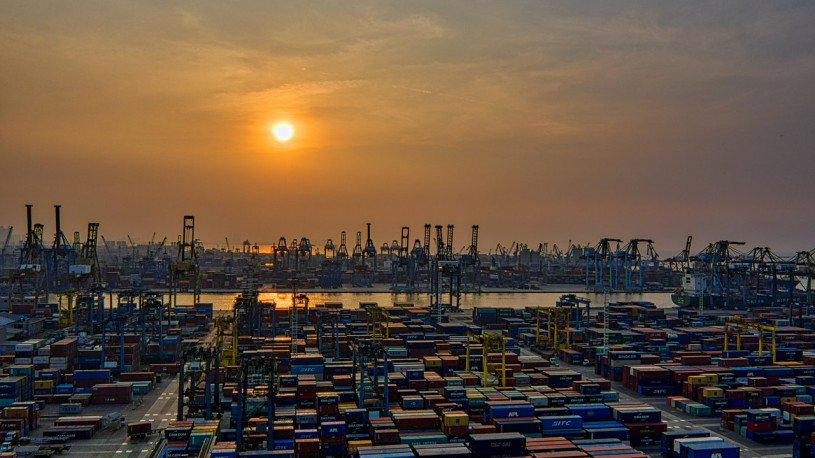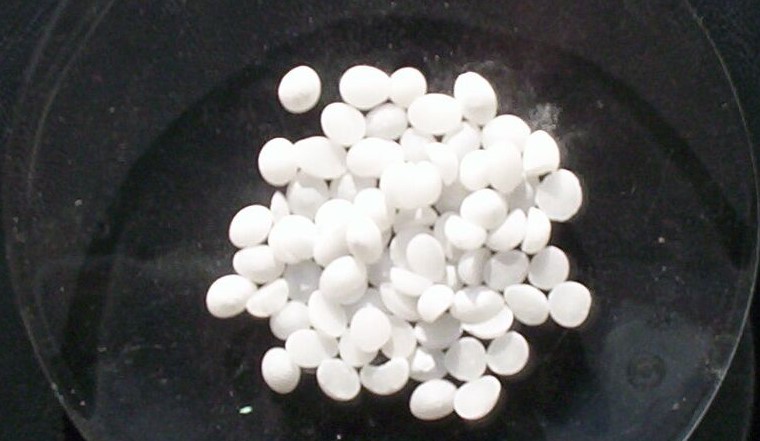-
The Indian Specialty Chemicals Market: Part 2 The Present
 Continue Reading
Continue ReadingAlready the higher profit margins frequently seen in the specialty chemicals sector are drawing companies towards manufacturing products that are further down the supply chain. Demand for chemicals in India is growing, as the increase in demand for the everyday products enjoyed in the West is growing.
It is predicted that the Indian middle class will number 580 million by 2030, resulting in rapid growth in automobile and domestic appliance production. Whilst a recent study showed that, “Between 2001 and 2011, the contribution of petrochemical and engineering goods to total exports grew from 14% to 42%.”
Ramkrishna Kashelkar, of the EconomicTimes of India notes the problems that smaller Indian chemicals companies face in these times of growth. He states that, “The specialty chemicals segment benefits from the fact that unlike commodity chemicals, they are not exposed to profit volatility. [However] not all companies can be equally agile in launching new products.” But he does note that some Indian firms are starting to adapt to the new business climate. “For instance, Mumbai-based Vinati Organics has emerged as the world’s biggest manufacturer of IBB – a specialty chemical used in the manufacture of anti-inflammatory drug ibuprofen – and the second biggest manufacturer of ATBS – a monomer used in the petroleum industry to secure crude oil out of deep wells. Similarly, Camlin Fine Sciences has emerged as a major player in food anti-oxidants, a segment in which it wants to grow capacities further.”
Other bulk chemical producers are also developing more specialty chemical production capabilities. One such company is Atul Limited, based in the province of Gujarat, which traditionally made standard colorants and agrochemicals. It has recently started an expansion program that includes the commissioning of the world’s largest para-Cresol plant. This versatile product is widely used in the manufacture of fragrance and in the personal care industry.
Meanwhile, Thirumalai Chemicals, who have a plant near Chennai that supplies phthalic anhydride to the paint industry, has also ventured into the specialty chemicals segment by making food acids. It is now one of the world’s top four producers of malic acid with a capacity of over 6,000 tonnes. As Thirumalai Chemicals’ managing director, R Parthasarathy, observes, “Malic acid is naturally found in apple and is better than citric or tartaric acid as a food additive. We are now the only producer in Asia.”
The strategy taken by Thirumalai chemicals is far from unique, but instead is part of a growing trend across the Indian chemicals industry to invest in developing specialised products for the improved profits they offer, whilst the processes are more complicated and the plant more expensive the rewards make economic sense. As Rajendra Gogri, vice-chairman and managing director of Aarti Industries (a benzene-based specialty chemicals producer) states, “The specialty chemicals business is driven by specialised assets and knowledge-based applications that make the business more complex and create a niche for products having higher and more stable margins.“
Pravin Herlekar, CMD of Omkar Specialty Chemicals, a supplier of intermediates to pharma and personal care industries, agrees that the time and money required to develop and manufacture specialised products may be off-putting, but in a developing market like India’s, the end result can sometimes make it very worthwhile, if not unique. He is glad that his company took the risk to invest in R&D, stating, “Thanks to our robust research and development, we come out with three to four new molecules every quarter. Often our products are new to the Indian market. Our conscious strategy is to avoid such products which others can make.”
Such strategies to invest and research are very necessary in specialty chemicals, as maintaining an information advantage is sure to bring rewards. However, expansion in a time of economic boom is relatively easy. It will be interesting to see how the Indian chemicals industry reacts to increased globalisation and competition from aboard.
-
The Indian Specialty Chemicals Market: Part 1 The Past
 Continue Reading
Continue ReadingIndia is often described as a land of contrasts; from incredible wealth to abject poverty. From barren deserts to lush rain forests and high mountains to sunken marshland. Such a contrast may also be said of its chemicals industry; once heavily dependent on commodity chemicals, it is now turning into a land of profit, and a gold rush towards specialty chemicals has begun.
This situation has arisen from its long, and also contrasting, history. India has been a land of Hindu kings, Muslim emperors, the British Raj and finally independence in 1947. Following separation from Pakistan, the country has had successive governments with a socialist outlook on economics. This led to years of protectionism that ‘walled in‘ its industries. They were protected from foreign explotation, but also largely restricted from foreign markets, investment and business practices.
When the country experienced a balance of payments crisis in 1991 the nation was forced to re-examine its economic policy. The decision in the mid-nineties to open markets up and accept a more liberal economic model has changed everything.
It has encouraged the phenominal growth that makes India the 7th largest economy in the world, and the third largest by purchasing power parity. During the last twenty years it has experienced average annual GDP growth of 5.8% and is now primed to be a major global power, economically, militarily and politically.
The Indian chemicals industry will play a large part in this transformation.
In some sectors of the chemicals market, the country is strong. For example, the Indian pharmaceutical market is already a major global player, expected to be worth $48 billion by 2020. India is also one of the largest producers of castor oil in the world, and one of the top 12 biotech destinations in the world with 2013 revenues of almost $4 billion.
Indian specialty chemicals however, at present make up only 3% of the global market, and for the most part, Indian chemical manufacturers do not have a strong presence on the world stage. Interestingly, Indian chemical firms are often smaller than in other countries. As Manish Panchal, who works as Practice Head – Chemicals, Energy & Supply Chain Management of the Indian industrial giant Tata states, “Indian [specialty chemical] companies are small in scale compared to global standards and operate in niche spaces. Most companies are family-run and their execution team has been built over many years.”
Many economists view the small size of Indian chemical operations and their family based nature as a disadvantage. They believe that smaller firms often lack access to the lines of credit or investment capital needed to perform research, buy new plant or attempt growth in new markets. There is also the fear that family based operations can be more risk averse and conservative in their strategies.
Panchal also makes other claims about the current state of the industry, saying, “The Indian chemicals industry is highly fragmented, with few large integrated companies. There are some 500 speciality chemicals companies in India with revenues of $20-200 million. [Many firms have] a strong domestic presence and an in-depth understanding of customer needs. Over time many companies have fine-tuned their products, thereby making them unique in terms of value proposition for Indian and neighbouring markets. Others companies have unique positioning, and a leadership position in their product segments (despite their small size) resulting in export revenues that are higher than domestic revenues.”
This mixed bag of specialised producers, mostly small in size, yet sometimes offering market dominance holds great promise for the future. The Indian economy is seemingly on the verge of tremendous growth, allowing for numerous opportunities for investment and trade.
But there are both positives and negatives in the Indian specialty chemicals market. Size, logistics, materials, ownership and competition all play a part in influencing how the industry will react to these challenges. But with the right product a savvy businessman should be able to make a success in trading chemicals.
However, the question still remains; how will the Indian specialty chemicals market react to the pressures of the modern global chemicals industry?
-
The Balance of KOH on the EU Market
 Continue Reading
Continue ReadingAt present, we are nearing the conclusion of amalgam based electrolysis technology in the manufacture of chlorine. The primary reason for the ending of this practice is the need to reduce the use of mercury because of its high impact on people and the environment. Although the amount of mercury in the production exhaust is relatively small, the affects of this metal are cumulative in nature, and have proven negative health effects.
Fortunately, following technological advances, an advanced membrane process has been developed that offers a comparable product, but without the added burden of having to manage mercury filled waste flows.
With a replacement process now available, the European Commission, through the European Chemicals Agency (ECHA) has ordered a ban on the use of mercury in industrial production and consumer use. So there will soon be no more mercury thermometers on sale.
That said the old system of mercury or amalgam based electrolysis is still currently widely in use due to the quality of material that it produces for a reasonable manufacturing cost. But with a ban imminent, manufacturers all over Europe are readying themselves for the conversion to membrane technology.
The following table (with data taken from publicly accessible sources) shows individual producers within the EU and their capacity to produce chlorine. It shows the processes used, and therefore it is possible to see which manufacturers need to either convert to membrane technology or terminate production in the near future.
From the above data it can be seen that only a few producers remain that are producing chlorine with a KOH by-product. As conversion projects increase, there will be a decrease in production capacity for KOH.
Already, the conversion is currently underway in Spolchemie (Czech Republic) which will increase capacity before the end of 2016, whilst the firm Chimiques Produits de Loos (FR, Tessenderlo Group) is also preparing for a conversion, which will be completed in the year 2017.
Naturally, the reduction in KOH production will affect many industries that need this useful resource. The table below shows which areas will be hardest hit.
This chart suggests that the main consumer of KOH is for technical products (mostly the production of potassium salts). About 30% of sector is for the manufacture of potassium carbonate, about 20% for potassium phosphates and the remaining 50% consists of other potassium salts such as potassium permanganate, potassium dichromate, potassium chromate, potassium cyanide, potassium nitrate and the like.
The second largest segment consists of fertilizer production where potassium is one of three major nutritional elements used for soil improvement.
The other processing segments also use KOH as source of nutrient, or alternatively for the regulation of the acidity where it acts as a strong base.
At present, there is a discussion about how the imbalance in the KOH market will look during the period from 2015 to 2020. Potassium hydroxide is an important product and a shortfall in production would be a big problem.
With such a challenge on the horizon it is as yet unclear what course the industry will take in response. How do you think the industry will respond to this imbalance?
